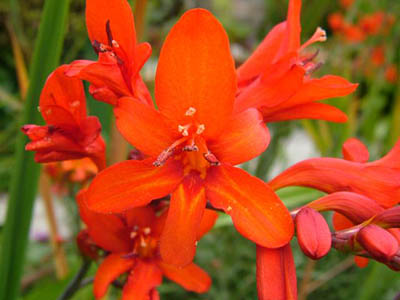| Home | Start key | Fact sheets | Glossary | Common flowers | ||
Crocosmia PlanchonIridaceae |
||||||
Synonyms
Crocosmia spp. were formerly known as Montbretia (although this name is no longer valid), and formerly included in Tritonia. Alternate trade names
montbretia Common names
montbretia Species cultivated
Cultivars are mostly hybrids, which are generally called Crocosmia xcrocosmiiflora (Burb. & Dean) N.E. Br., of unknown parentage or possibly of parents C. aurea (Hook.) Planch. x C. pottsii (Bak.) N.E. Br. One species cultivated is C. masonorum (Bol.) N.E. Br. Origin
South Africa. Brief characterization
Long, wiry, usually branched stems commonly bearing long, sheathing, overlapping, ensiform leaves and horizontal to erect spikes at branch ends; sessile flowers ca. 2.5-6 cm long, alternating regularly in two nearly opposite rows; each flower subtended by 2 unequal, scarious spathe bracts that obscure the ovary; corolla funnelform to trumpet-shaped and curving, with 6 spreading tepal lobes in 2 series. Cultivar and/or species variation
Stems 45-90 cm long with 4- to 20-flowered spikes terminating simple or branched stems; flowers in shades of yellow, orange, and red, sometimes with darker or lighter colored throat markings; two series of tepal lobes more or less equal, or one apical tepal larger. May be confused with
Countries exporting
Kenya, Zimbabwe. |
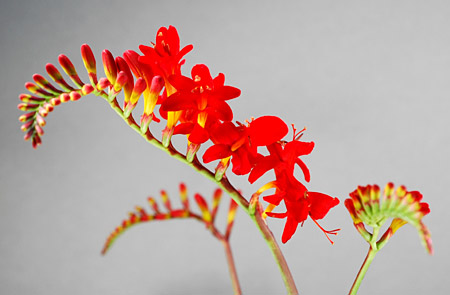

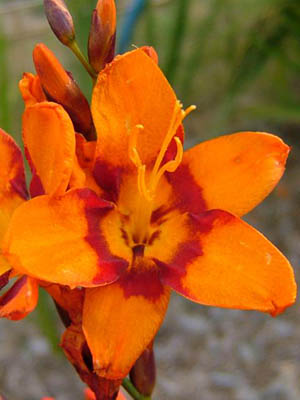 |
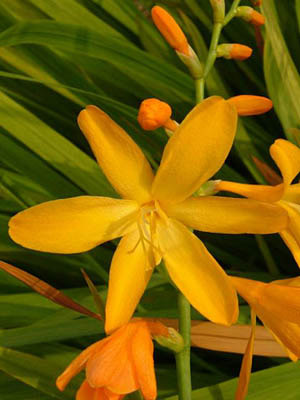 |
|
| Crocosmia xcrocosmiiflora
'Emily McKenzie'
Photo: © David Fenwick, The African Garden, UK |
Crocosmia xcrocosmiiflora
'Norwich Canary'
Photo: © David Fenwick, The African Garden, UK |
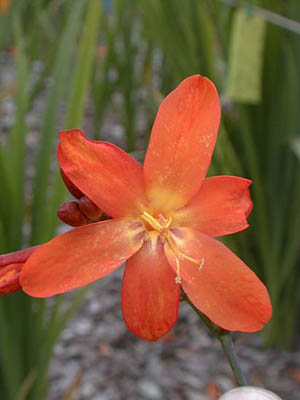 |
 |
|
| Crocosmia xcrocosmiiflora
'AJ Amos'
Photo: © David Fenwick, The African Garden, UK |
Crocosmia xcrocosmiiflora
'Firebird'
Photo: © David Fenwick, The African Garden, UK |

